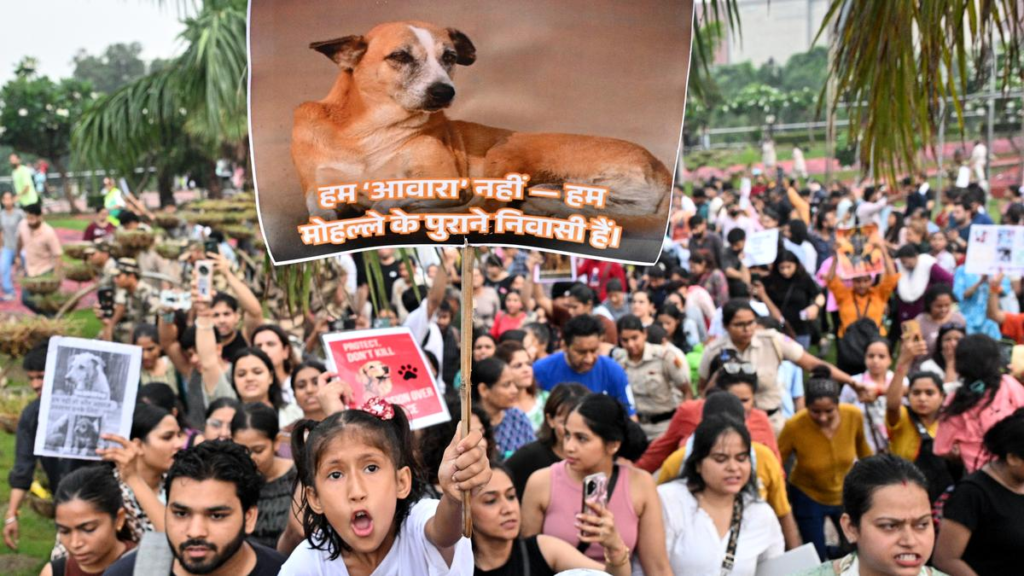
India’s Supreme Court recently revised its stance on managing stray dogs, particularly in Delhi and surrounding areas, following public outcry and concerns from animal welfare groups.
Key Aspects of the Revised Supreme Court Directive (August 22, 2025)
- Sterilization and Vaccination: The Court mandated that all stray dogs captured must undergo sterilization, deworming, and vaccination before being returned to their original locations. Exceptions are made for dogs that are infected with rabies or exhibit aggressive behavior, which will be quarantined or housed in shelters.
- Feeding Regulations: Public feeding of stray dogs on streets is prohibited. Instead, municipal authorities are required to establish designated feeding zones within each ward, with clear signage indicating approved areas.
- National Policy Development: The Supreme Court has directed the formulation of a uniform national policy on stray dog management, involving all states and union territories to ensure consistent implementation of the Animal Birth Control (ABC) Rules.
- Legal and Financial Implications: Individuals or organizations obstructing the implementation of these directives may face legal action. Additionally, NGOs and animal welfare groups are required to contribute financially to the development of public infrastructure supporting these measures.
- Stray Dog Release:
Sterilized and dewormed dogs should be released back into their territories, except for those infected with rabies or exhibiting aggressive tendencies, which are to be housed in separate shelters.
6. Feeding Zones: The order prohibits feeding stray dogs in public spaces and directs civic bodies to create designated feeding locations.
7. Shelters:
Shelters are to be established for dogs with rabies or aggressive behavior.
8.National Policy & Case Transfer:
The court has widened the scope of the proceedings to facilitate the framing of a national policy for stray dogs and has directed the transfer of all related cases pending in various high courts to the Supreme Court.
This revised approach aims to balance public safety concerns with humane treatment of animals, aligning with existing animal welfare laws and addressing logistical challenges associated with large-scale relocation of stray dogs.
Contributed by Shruti ( Intern )
